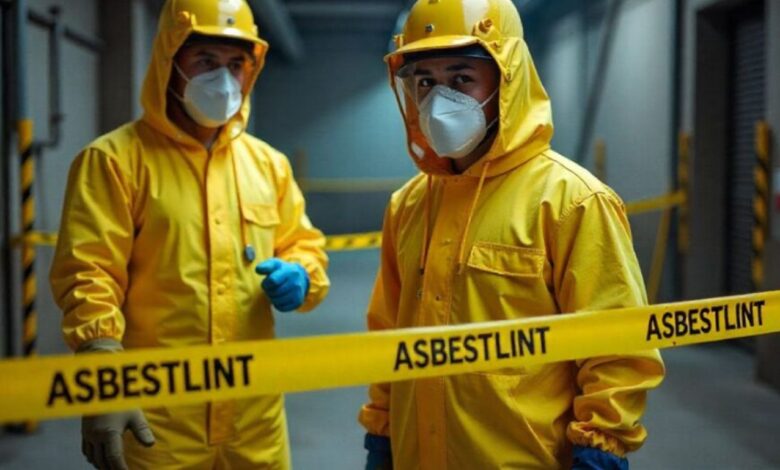
Asbestlint refers to asbestos fibers that break down into thin, invisible threads when disturbed. These fibers, once widely used in construction and industry, pose significant health hazards if inhaled. For decades, asbestos was praised for its fire resistance and durability, yet its hidden dangers became clear only later.
Today, asbestlint remains a concern in older buildings, renovation projects, and industries where asbestos materials were once common. Awareness and safe handling are crucial to protect both workers and the general public.
What Is Asbestlint?
Asbestlint is the microscopic dust released when asbestos-containing materials are cut, drilled, broken, or weathered. Unlike ordinary dust, these fibers are sharp and resistant to breakdown. Once airborne, they can linger for hours, making them particularly dangerous indoors.
Because cannot be seen or smelled, people may unknowingly inhale it, leading to long-term health effects.
Historical Use of Asbestos
Asbestos was widely used during the 20th century for insulation, roofing, cement, tiles, and automotive parts. Its resistance to heat and corrosion made it invaluable. Unfortunately, the health effects of were underestimated until workers began suffering from respiratory illnesses.
By the 1980s and 1990s, many countries had restricted or banned asbestos, but older structures still contain it.
Why Asbestlint Is Dangerous
The danger of asbestlint lies in its ability to penetrate deep into the lungs. Once inhaled, fibers can cause:
-
Asbestosis: Scarring of lung tissue leading to breathing problems.
-
Lung cancer: Strongly linked with long-term exposure.
-
Mesothelioma: A rare but deadly cancer affecting the chest and abdomen.
The latency period can be decades, meaning exposure today may cause illness years later.
Sources of Asbestlint Exposure
Common sources include:
-
Renovation or demolition of old buildings
-
Damaged insulation or roofing
-
Asbestos cement pipes and tiles
-
Automotive brake pads and clutches (historically)
-
Industrial workplaces
Anyone involved in construction, repair, or demolition may encounter unknowingly.
How Asbestlint Spreads
Asbestlint spreads easily when disturbed. For example, sanding, drilling, or breaking asbestos materials releases microscopic fibers into the air. Even minor damage, like cracked tiles or weathered roofs, can release dangerous dust.
Once airborne, fibers travel through ventilation systems or cling to clothing, spreading contamination.
Regulations on Asbestlint
Governments worldwide have enacted strict regulations to control asbestos use. These include:
-
Bans on asbestos-containing materials in new construction
-
Guidelines for safe removal and disposal
-
Licensing requirements for asbestos contractors
-
Air quality monitoring standards
Strict enforcement ensures public safety and limits exposure to asbestlint.
Safe Handling of Asbestlint
If asbestos-containing materials are suspected, experts recommend:
-
Avoid disturbing the material.
-
Hire licensed asbestos removal professionals.
-
Use protective gear if accidental exposure is possible.
-
Ensure proper ventilation and sealing during work.
DIY removal is strongly discouraged due to the risks involved.
Asbestlint and Home Renovation
Many homeowners encounter asbestos during renovations. Floor tiles, insulation, or ceiling panels from older houses may contain asbestos. Before starting any project, it’s essential to test materials.
Professional asbestos surveys and safe removal prevent accidental contamination.
Protective Measures Against Asbestlint
Workers and individuals can protect themselves by:
-
Wearing approved respirators
-
Using disposable protective suits
-
Wetting materials before handling to reduce dust
-
Isolating work areas with plastic barriers
-
Following strict disposal procedures
These precautions minimize airborne fiber release.
Modern Alternatives to Asbestos
To replace asbestos, industries now use safer materials such as:
-
Mineral wool
-
Fiberglass insulation
-
Cellulose fibers
-
Thermoplastic composites
These alternatives provide fire resistance and durability without the dangers of .
Health Monitoring for Asbestlint Exposure
Individuals with past exposure may undergo medical monitoring, including chest X-rays and lung function tests. Early detection of asbestos-related diseases improves treatment outcomes.
Regular check-ups are recommended for construction workers, miners, and those who lived in asbestos-heavy environments.
Environmental Concerns About Asbestlint
Asbestlint not only affects humans but also contaminates the environment. Improper disposal can pollute soil and water, leading to long-term ecological risks.
Safe waste management is therefore essential to prevent secondary exposure.
Asbestlint in Developing Countries
While many developed nations banned asbestos, some developing countries still use it due to cost and availability. This creates health risks for millions of workers and communities. International organizations push forglobal bans to protect vulnerable populations.
Case Studies of Asbestlint Exposure
-
Industrial towns: Workers in asbestos factories developed high rates of lung disease.
-
Schools and hospitals: Renovations revealed hidden asbestos in ceilings and floors.
-
Shipyards: Past use of asbestos insulation led to widespread illness among workers.
These examples highlight the ongoing dangers of legacy asbestos use.
The Future of Asbestlint Management
Advances in technology, stricter regulations, and global awareness are reducing risks. Robotics and specialized vacuum systems are being tested for safer asbestos removal. Public education ensures communities remain vigilant about asbestos hazards.
FAQs
What is asbestlint?
It is asbestos dust or fibers released into the air when asbestos-containing materials are disturbed.
Why is dangerous?
Inhaled fibers can cause lung diseases, cancer, and mesothelioma.
Where might I find asbestos today?
In older buildings, insulation, tiles, roofing, and industrial materials.
Can I remove asbestos myself?
No, professional removal is required for safety.
How do I know if my home has asbestos?
Testing by certified professionals is the only reliable method.
Is asbestos still used anywhere?
Yes, in some developing countries, though many nations have banned it.
Conclusion
The issue of asbestlint serves as a reminder of how industrial innovation can come with hidden risks. While asbestos once promised safety and durability, the fibers it leaves behind pose severe health hazards. Today, through regulation, awareness, and modern alternatives, exposure risks are far lower, yet vigilance remains vital.
By respecting safety protocols, seeking professional help during renovations, and supporting global bans, we can protect future generations from the dangers of .




